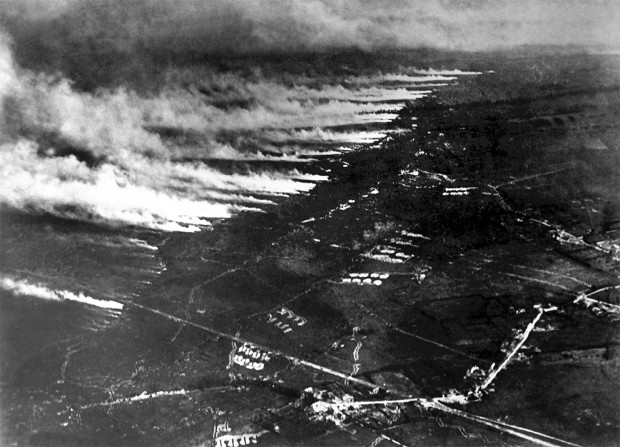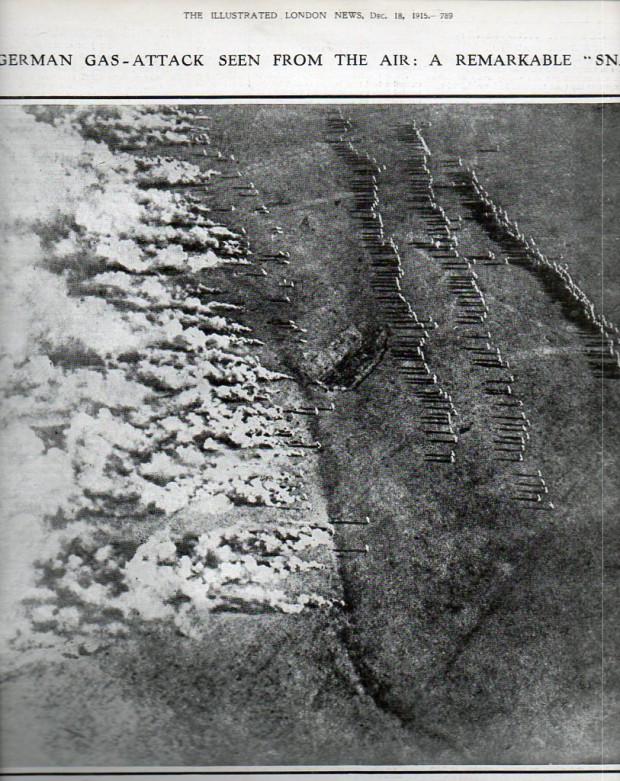An iconographic and text archive related to communication, technology and art.
☛ Illustrated London News: “A German Gas-Attack Seen From The Air: a remarkable ‘snap’”, vol. 147, no. 4000, Dec. 18, 1915, p. 789. Cropped version retrieved from JF Ptak Science Books. A wider version can be retrieved here.
April 22, 2015 marks the 100th anniversary of the Second Battle of Ypres. More precisely, it marks the launch of the first large-scale gas attack. The significance of this event serves as the basis for Peter Sloterdijk’s book Terror From The Air. In his view, the modifications of the atmosphere for the explicit purpose of creating a lethal environment for the soldiers is representative of what the 20th century would come to be. Below are the opening lines of his book:
If asked to say in a single sentence and as few words as possible what, apart from its incommensurable achievements in the arts, the 20th century introduced into the history of civilization by way of singular and incomparable features, the response would emerge with three criteria. Anybody wanting to grasp the originality of the era has to consider: the practice of terrorism, the concept of product design, and environmental thinking. With the first, enemy interaction was established on a post-militaristic basis; with the second, functionalism was enabled to re-connect to the world of perception; and with the third, phenomena of life and knowledge became more profoundly linked than ever before. Taken together, all three mark an acceleration in “explication.” In other words: the revealing-inclusion of the background givens underlying manifest operations. If also asked to determine objectively when this century began, the response could be given to the very day. Using the above as reference points, it can be shown that from the outset all three of this era’s key features were linked together in a common primal scene. The 20th century dawned in a spectacular revelation on April 22, 1915, when a specially formed German “gas regiment” launched the first, large-scale operation against French-Canadian troops in the northern Ypres Salient using chlorine gas as their means of combat. (tr. by Amy Patton and Steve Corcoran, Los Angeles: Semiotext, 2009, pp. 9-10; originally published in 2002 as Luftbeben by Editions Suhrkamp, Frankfurt)
Today, it could be argued that the lethal transformation of our living conditions expands well beyond the sphere of traditional warfare. The widely diversified concerns loosely gathered under the category designated by the name of “anthropocene” is a testimony of this expansion. Coincidently, two days ago Elizabeth Kolbert was awarded the 2015 Pulitzer Prize in the nonfiction category for her book The Sixth Extinction. An Unnatural History, which tackles those very issues.
There is an official commemoration website for the “Century of Ieper” (Iper is the Dutch name, although Ypres is more common).

- By Philippe Theophanidis
- on
- ― Published in Communication, Technology
- Tagged: anthropocene, atmosphere, chemical, environment, gas, media, mediation, war, warfare

